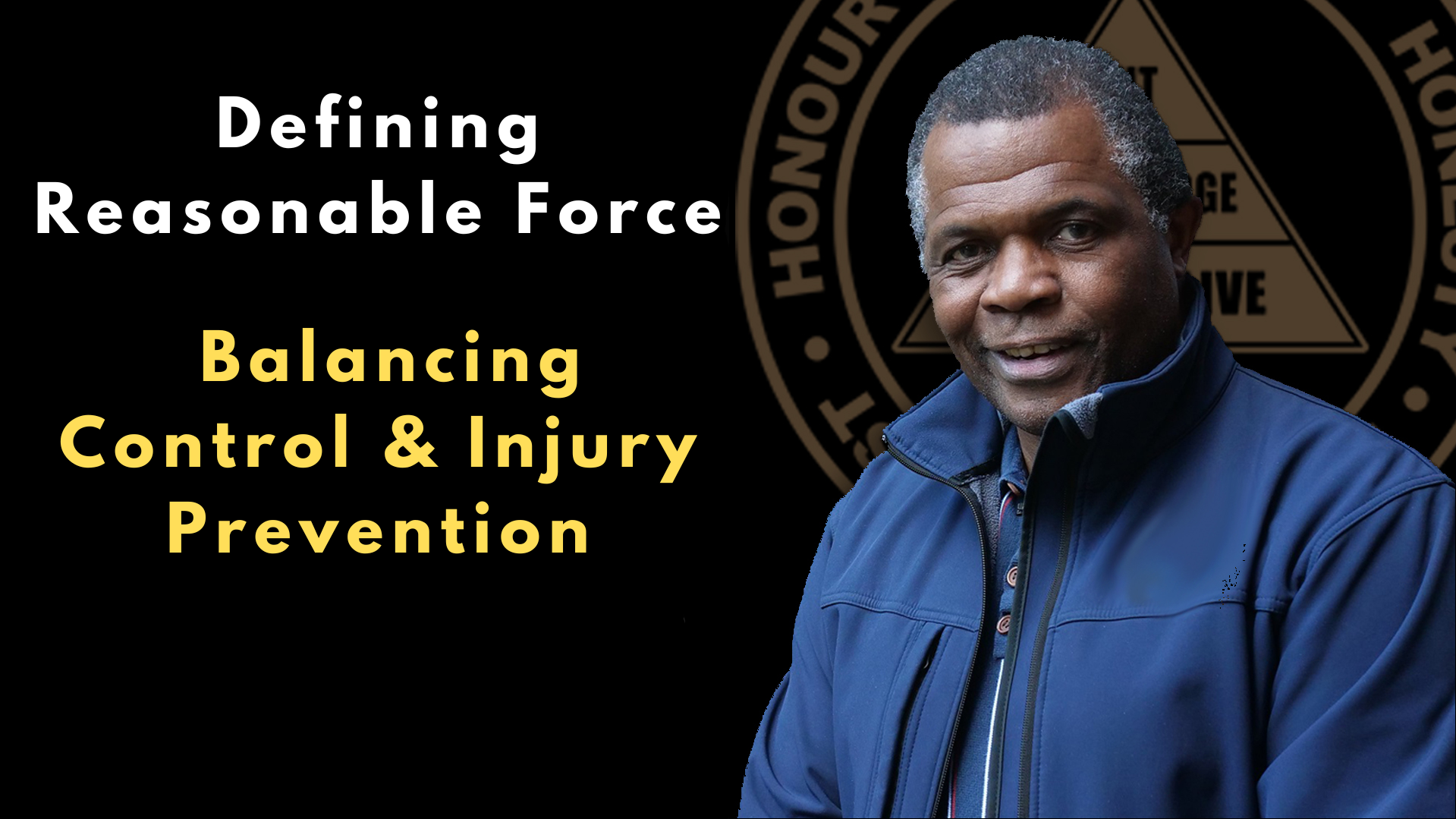The concept of reasonable force is a fundamental principle in legal frameworks worldwide, governing the permissible level of force individuals can use in various situations.
However, the term “reasonable” is inherently subjective, making it difficult to create a universally applicable definition.
This article looks into the complexities of defining reasonable force and highlights the need to get balance right between control and injury prevention when considering the use of force.
The Subjectivity of Reasonable Force
What constitutes reasonable force varies greatly depending on cultural norms, societal expectations, individual beliefs, and the specific circumstances of a situation.
What one person perceives as reasonable might seem excessive or insufficient to another. Therefore a strict and definitive legal definition becomes challenging due to the inherent subjectivity involved.
Legal Frameworks and Self-Defence
In many legal systems, the concept of reasonable force is most prominently discussed in the context of self-defence.
When facing imminent harm or threat, individuals are generally allowed to use force to protect themselves or others.
However, the amount of force used must be considered ‘reasonable’ in light of the perceived threat.
Control versus Injury Prevention
The issue is in striking a delicate balance between achieving control over a situation and preventing excessive injury or harm.
The primary objective for using force is often to gain control or incapacitate the aggressor, not to cause unnecessary injury.
However, determining the appropriate level of force to attain control while minimising harm is no simple task.
Factors Influencing Reasonable Force
Several factors influence the assessment of what constitutes reasonable force:
- Proportionality: The force used must be proportional to the threat posed. Employing excessive force beyond what is necessary to neutralise the threat may lead to facing legal consequences.
- Imminent danger: The threat must be immediate and not merely speculative. Using force against a potential future threat may not be considered reasonable.
- Comparative abilities: The physical capabilities of the parties involved should be taken into account. Using force against a significantly weaker or unarmed individual may be deemed excessive.
- Necessity: The availability of alternative (options) non-violent approaches to de-escalate a situation is relevant in determining the reasonableness of force.
- Training and expertise: Law enforcement officers and security personnel, for instance, are often held to higher standards due to the levels of training they receive.
The Grey Areas of ‘Reasonable Force’
Despite the aforementioned factors, the subjectivity of ‘reasonable force’ often leads to contentious legal debates and complex courtroom decisions.
Different jurisdictions may interpret reasonable force differently, leading to inconsistent outcomes in similar cases.
Consequently, case law plays a vital role in shaping the understanding of reasonable force in specific situations and circumstances.
Promoting Objective Guidelines
While it is difficult to create a one-size-fits-all definition of reasonable force, promoting objective guidelines and standardised training can help mitigate the subjectivity surrounding the concept.
By providing clear protocols and establishing good practice procedures, individuals can better navigate the complexities surrounding the use of force.
Summary
Defining reasonable force continues to be a challenging task due to its inherent subjectivity.
The balance between control and injury prevention is crucial when contemplating the use of force, especially in self-defence or enforcement situations.
While a universally applicable definition might remain elusive, continually striving for clarity and objective guidelines can lead to more informed decisions and better outcomes in situations where force is necessary.
The Benefits Training with NFPS Ltd
The NFPS Advanced Restraint course provides staff with a range of skills, including de-escalation techniques, non-restrictive physical interventions, and crisis communication.
By adopting a holistic approach to managing challenging behaviours, staff can create a more secure and safer environment whilst respecting peoples human rights.
What To Do Next?
Our next BTEC Level 3 Restraint Instructor Award course commences on the 4th September at Lilleshall National Sports Centre.
To schedule a call with us click here and click the button ‘Claim Your Free 30 Minute Strategy Session’, or go to our contact us page here.
Alternatively you can email and questions to us direct:
Trevel: trevelhenry@nfps.info
Rab: robert@nfps.info
We look forward to speaking with you and hope to see you on the course.

